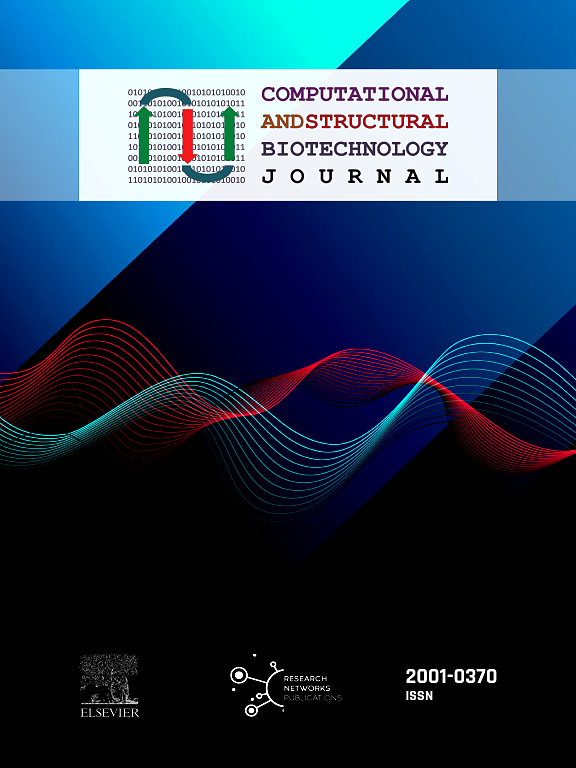一种人工智能驱动的多尺度方法,利用 SSbD 概念将透明木材开发为可持续功能材料
IF 4.4
2区 生物学
Q2 BIOCHEMISTRY & MOLECULAR BIOLOGY
Computational and structural biotechnology journal
Pub Date : 2024-10-18
DOI:10.1016/j.csbj.2024.10.022
引用次数: 0
摘要
高效设计、生产和优化用于各工业领域的安全、可持续的新型材料,是我们社会面临的一项持续挑战,而且在未来还将不断升级。木基复合材料为玻璃和聚合物等高冲击材料提供了极具吸引力的可持续替代品,多年来一直是实验研究和开发的重点。与传统开发方法相比,基于计算和人工智能的材料设计大大加快了这些材料的开发速度。然而,可靠的数值模型对于实现这一目标至关重要。最近由欧盟委员会资助的 AI-TranspWood 项目的目标是在透明木材(TW)的背景下开发这种基于计算和人工智能的工具。在本项目中,我们特别采用了人工智能(AI)驱动的多尺度方法来推进开发工作。本文章由计算机程序翻译,如有差异,请以英文原文为准。
An AI-driven multiscale methodology to develop transparent wood as sustainable functional material by using the SSbD concept
Efficient design, production, and optimization of new safe and sustainable by design materials for various industrial sectors is an on-going challenge for our society, poised to escalate in the future. Wood-based composite materials offer an attractive sustainable alternative to high impact materials such as glass and polymers and have been the focus of experimental research and development for years. Computational and AI-based materials design provides significant speed-up the development of these materials compared to traditional methods of development. However, reliable numerical models are essential for achieving this goal. The AI-TranspWood project, recently funded by the European Commission, has the ambition to develop such computational and AI-based tools in the context of transparent wood (TW), a promising composite with potential applications in various industrial fields. In this project we advance the development specifically by using an Artificial Intelligence (AI)-driven multiscale methodology.
求助全文
通过发布文献求助,成功后即可免费获取论文全文。
去求助
来源期刊

Computational and structural biotechnology journal
Biochemistry, Genetics and Molecular Biology-Biophysics
CiteScore
9.30
自引率
3.30%
发文量
540
审稿时长
6 weeks
期刊介绍:
Computational and Structural Biotechnology Journal (CSBJ) is an online gold open access journal publishing research articles and reviews after full peer review. All articles are published, without barriers to access, immediately upon acceptance. The journal places a strong emphasis on functional and mechanistic understanding of how molecular components in a biological process work together through the application of computational methods. Structural data may provide such insights, but they are not a pre-requisite for publication in the journal. Specific areas of interest include, but are not limited to:
Structure and function of proteins, nucleic acids and other macromolecules
Structure and function of multi-component complexes
Protein folding, processing and degradation
Enzymology
Computational and structural studies of plant systems
Microbial Informatics
Genomics
Proteomics
Metabolomics
Algorithms and Hypothesis in Bioinformatics
Mathematical and Theoretical Biology
Computational Chemistry and Drug Discovery
Microscopy and Molecular Imaging
Nanotechnology
Systems and Synthetic Biology
 求助内容:
求助内容: 应助结果提醒方式:
应助结果提醒方式:


